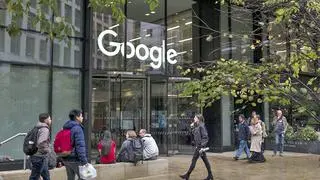While Amazon Food has been pegged as a strong competitor to the Zomato and Swiggy duopoly, analysts have raised concerns around the global company’s weakness in last mile delivery.
Even in the case of traditional deliveries (durables), Amazon’s last mile delivery is handled by sub-contractors like Dependo logistics. Last mile delivery is a critical aspect of food deliveries and significantly more complicated than delivery of durables, given the perishable nature and high frequency of food orders.
“If there is a case for major synergies across Amazon’s core offerings and food delivery, it would have seen roaring success for its Amazon Restaurants offering in core markets like the US and UK. On the contrary, it had to shut down this service after three years of its launch in 2017. Our analysis suggests this is due to Amazon’s weakness in last mile delivery,” Sudheer Guntupalli, Manoj Menon, and Hardik Sangani, analysts with ICICI Securities said in a note to investors.
This is where homegrown food delivery companies Zomato and Swiggy seem to have built an expertise in the past four to seven years. The customer data collected by the two companies prove to be a strategic asset for these players in predicting and incentivising customer behaviour. It also gives them a competitive edge in last mile deliveries by enabling better route optimisation for delivery partners, among other things.
Bengaluru’s Amazon Food
Launched in 2020, Amazon Food operations have stayed limited to Bengaluru with a coverage in 62 pin codes out of over 250 total pincodes. According to a Motilal Oswal’s note to investors, Amazon Food’s initial rollout has primarily been with restaurant chains in Bengaluru and is yet to expand aggressively to small independent restaurants. To put things into perspective, Amazon Food had 2,500 restaurants as compared to about 15,000 restaurants on Zomato (within Bengaluru) till March 2021.
Commenting on Amazon Food’s growth plans and the current metrics, an Amazon spokesperson told BusinessLine , “We launched Amazon Food in Bangalore earlier this year allowing customers to order from handpicked local restaurants and cloud kitchens that pass our high hygiene certification bar. We are conducting free of cost hygiene audits and we have received appreciation from our restaurant partners for helping identify gaps in their processes/infra and tremendous support from them in fixing these gaps and meeting these standards.”
The spokesperson added that the Amazon Food customers are ordering multiple times in a week and food is the most frequently ordered category on Amazon. Going forward, the company aims to serve millions of customers and partner with restaurants across the country.
Low take rates
To boost partnerships with restaurants, Amazon Food has been offering restaurants lower take rates of around 10 per cent as compared to Zomato and Swiggy’s 20 per cent take rate. The take rates charged by Zomato and Swiggy have increased over the years, as a result of the duo's attempt to cut their losses.
Amazon has been betting on its Prime membership, to help it sustain losses in the food delivery business. The global company is not charging any delivery fee from its Prime members but charges a marginal ₹19 from non-Prime members. Zomato and Swiggy usually charge around ₹20- ₹100 delivery fee on orders.
Both Swiggy and Zomato have started their loyalty programs, Zomato Pro and Swiggy Super, which allow users to place orders at discounted rates, among other benefits. Yet these foodtech companies will have a hard time competing with Amazon’s Prime membership which includes faster Prime deliveries, subscription to Prime Video and Amazon Prime Music in addition to the zero delivery fees on food orders.
“Amazon is able to keep its take rates below the industry average as it gains an additional benefit for increasing Prime membership at the expense of losses in the food delivery vertical. Unlike Amazon, Zomato and Swiggy do not have a vested interest in lower commission rates. Increasing competition (in case of an Amazon expansion) can lead to another prolonged period of cash burn in the industry and pose a risk to the Zomato-Swiggy duopoly,” Mukul Garg, Heenal Gada and Anmol Garg, analysts with Motilal Oswal said in a note to investors.
Case of Uber Eats
However, this is not the first time that a global company (with deep pockets) has tried to capture India’s food delivery market. In 2017, Uber also entered India’s food delivery space with the launch of Uber Eats. The cab-hailing company too had depended on its existing network of cabs and global presence to expand in the Indian market. But after three years of lukewarm presence, Uber eventually sold its food delivery business to Zomato for $206 million in 2020.
Examples like Uber Eats and Ola Cafe (shutdown after a year of operations) show that while capital is a necessary requirement for food delivery business, it is not sufficient. Zomato and Swiggy have had a significant head start in partnering with the pan-India food chains like Dominos, Pizza Hut, Burger King, etc. along with standalone restaurants, which makes about 94 per cent of the Indian market. This early mover advantage gives these companies an edge over Amazon in terms of network effect, brand and reach.
“While the ‘extended brand’ of Amazon in food delivery may be as good as that of Zomato and Swiggy, we believe it will take some time for it to establish the other competitive advantages – network effect, reach and data or insight into customer behaviour,” the analysts with ICICI Securities added.








Comments
Comments have to be in English, and in full sentences. They cannot be abusive or personal. Please abide by our community guidelines for posting your comments.
We have migrated to a new commenting platform. If you are already a registered user of TheHindu Businessline and logged in, you may continue to engage with our articles. If you do not have an account please register and login to post comments. Users can access their older comments by logging into their accounts on Vuukle.